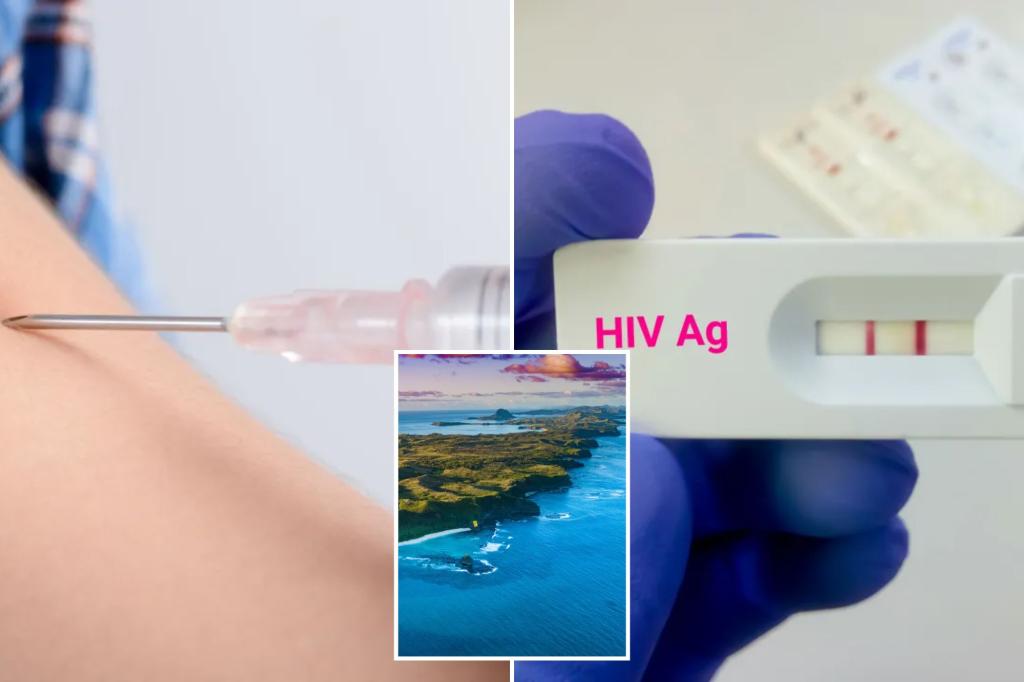Talk about bad blood.
Health experts are sounding the alarm over a disturbing trend where drug users swap blood to score a secondhand high.
Called “bluetoothing,” the gruesome movement is fueling a wave of new HIV infections in hotspots around the globe, including Fiji and South Africa.
Doctors are warning that the surge in cases is just the tip of the iceberg when it comes to the risks tied to this dangerous practice — also known as “hotspotting.”
Here’s everything you need to know about the rise of this deadly, cost-cutting hack.
What is ‘bluetoothing’?
It’s a risky street practice that involves injecting a powerful drug — like heroin or meth — then drawing a small amount of drug-laced blood back into a syringe and injecting it into someone else to share the high.
The process is repeated from one person to the next, often using the same needle.
“In settings of severe poverty, it’s a cheap method of getting high with a lot of consequences,” Brian Zanoni, an Emory University professor who has studied drug injecting behaviors in South Africa, told the New York Times this week. “You’re basically getting two doses for the price of one.”
But experts say it’s unclear if it actually works. Some believe the secondhand injection may offer a weaker high, while others say it’s little more than a placebo.
What are the risks?
“Young people, who sometimes do not have enough money to buy the drugs they want, are exposing themselves to all kinds of dangers by injecting themselves with the blood of others,” Maj Gen Khomo Mohobo, who runs a youth initiative in Lesotho in Africa, where the practice is common, told The Guardian.
At the top of the list is HIV. Unlike regular needle-sharing, this method involves direct blood transfer — meaning any virus in the first person’s bloodstream is injected straight into the next, bypassing the body’s usual defenses.
And HIV isn’t the only threat.
Because people have different blood types, injecting the wrong one can cause a severe and even fatal immune reaction.
“Another danger of sharing needles is the transmission of hepatitis B and hepatitis C,” Josua Naisele, acting CEO of Fiji’s substance abuse advisory council, told The Fiji Times.
Both viruses attack the liver and can lead to long-term complications like cirrhosis and cancer. Symptoms may include nausea, jaundice, abdominal pain and fatigue.
“There is [also] a danger of getting bacterial infection at the injection site as well as passing bacteria into the blood stream,” Naisele said. “This can cause severe infections.”
The risk is especially high for meth users, who often have weakened immune systems and are even more vulnerable to complications.
Where is ‘bluetoothing’ happening?
Some of the earliest reports of the practice came from Tanzania in 2010, where researchers found that women who were heavy drug users and living in short-term housing were doing it.
Since then, “hotspotting” has gained traction across parts of Africa and the Pacific Islands — and continues to spread.
In South Africa, researchers found nearly 1 in 5 intravenous drug users had tried blood-sharing. In Pakistan, similar cases have emerged involving blood-filled syringes being sold on the street.
Perhaps the most alarming spike is happening in Fiji, where medical professionals say they are being “smashed, left right and center” by the surge in HIV cases.
Between 2014 and 2024, new infections in Fiji jumped tenfold, according to UNAIDS. An official outbreak was declared in January.
Injectable drug use is now the most common mode of transmission, accounting for 48% of new cases — most of them among people aged 15 to 34.
Some of those infected are just 13 years old.
In August 2024, the country’s Ministry of Health formally linked “bluetoothing” to the alarming rise in cases.
And the situation isn’t slowing down.
By the end of 2025, officials estimate more than 3,000 new HIV cases will be recorded — up from fewer than 500 residents living with the virus in 2014, per the Fiji Sun.
“This is a national crisis,” Fiji’s assistant health minister Penioni Ravunawa said last week. “And it is not slowing down.”
Health experts say the most terrifying part isn’t just the speed of the outbreak — it’s the lack of tools to fight it.
Fiji’s limited public health infrastructure is already overwhelmed, and experts fear the island nation simply can’t keep up.
“The support systems — the nursing, the ability to distribute or to access the drugs for treatment of HIV — just aren’t there,” José Sousa-Santos, head of the Pacific Regional Security Hub at New Zealand’s University of Canterbury, told The BBC.
“What we’re seeing at the moment is the beginning of the avalanche.”
Read the full article here

